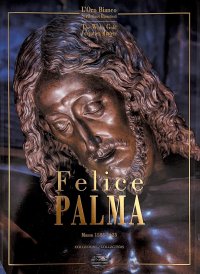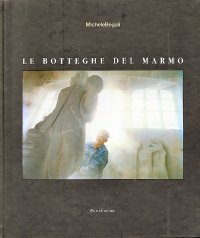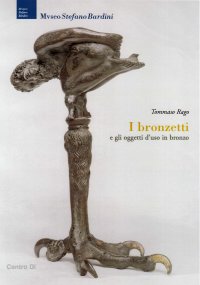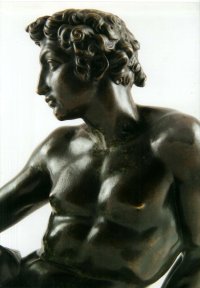Felice Palma. Massa 1583-1625. Collezione / Collection.
Texts by Andrei Cristina, Ciarlo Nicola, Federici Fabrizio, Claudio Casini and Sara Ragni.
Italian and English Text.
Pontedera, 2024; bound in a case, pp. 289, b/w and col. ill., b/w and col. plates, cm 24,5x34.
(L'Oro Bianco. Straordinari Dimenticati. The White Gold Forgotten Masters).
cover price: € 160.00
|
Books included in the offer:
Felice Palma. Massa 1583-1625. Collezione / Collection.
Texts by Andrei Cristina, Ciarlo Nicola, Federici Fabrizio, Claudio Casini and Sara Ragni.
Italian and English Text.
Pontedera, 2024; bound in a case, pp. 289, b/w and col. ill., b/w and col. plates, cm 24,5x34.
(L'Oro Bianco. Straordinari Dimenticati. The White Gold Forgotten Masters).
FREE (cover price: € 160.00)
Le botteghe del marmo
Italian and English Text.
Ospedaletto, 1992; bound, pp. 153, 10 b/w ill., 60 col. ill., cm 24x29.
(Immagine).
FREE (cover price: € 34.49)
Museo Stefano Bardini. I Bronzetti e gli Oggetti d'Uso in Bronzo
Edited by Nesi A.
Firenze, 2009; paperback, pp. 191, 102 b/w ill., 7 col. ill., cm 17x24,5.
(Museo Stefano Bardini).
FREE (cover price: € 30.00)
Bronzetti e Rilievi dal XV al XVIII Secolo
Bologna, 2015; 2 vols., bound in a case, pp. 729, ill., col. plates, cm 21,5x30,5.
FREE (cover price: € 90.00)
The Morphology of the Times. European Cities and their Historical Growth
Hinse Ton
DOM Publishers
English Text.
Berlin, 2014; paperback, pp. 304, 400 b/w and col. ill., cm 16,5x23,5.
ISBN: 3-86922-309-X - EAN13: 9783869223094
Subject: History of Architecture,Urbanism
Places: Europe
Languages: 
Weight: 0.97 kg
The book begins with the Ancient Roman colonies established as a means of securing the empire's expanding territories and goes on to explore a geographically balanced sample of eight European cities: Seville, Lisbon, Turin, Rome, Barcelona, Pessac, Dresden, and Utrecht. Each chapter highlights an important social transformation in the city under discussion and examines its effect on the urban space. A wide range of social dynamics and urban transitions is discussed in fascinating detail, from medieval fragmentation to the expansionist policies of the Renaissance, from Baroque splendour to the development of public space in the nineteenth century and to the present day. Hinse explains how the Moors first transformed the Roman grid structure into intricate labyrinths and how the Lisbon aristocrats' escape from the cramped, densely populated city to the botânico gave rise to new urban structures. In late nineteenth-century Rome the middle classes conquered the Esquilin, while in today's Utrecht the historical fabric serves as a backdrop for leisure activities and shopping. Although the book describes and analyzes European cities in all their diversity, it also highlights the similarities arising from shared historical roots. Explanatory photographs, standardized maps, and plans illustrate the changing morphology of the cities through the ages and make it easy for readers to compare different developments.
A journey through the history of the European city, this book makes compelling reading for architects, urban planners, art historians, urban sociologists, and anyone interested in European history and architecture. It is also an homage to the European city, its aesthetic and typology.












